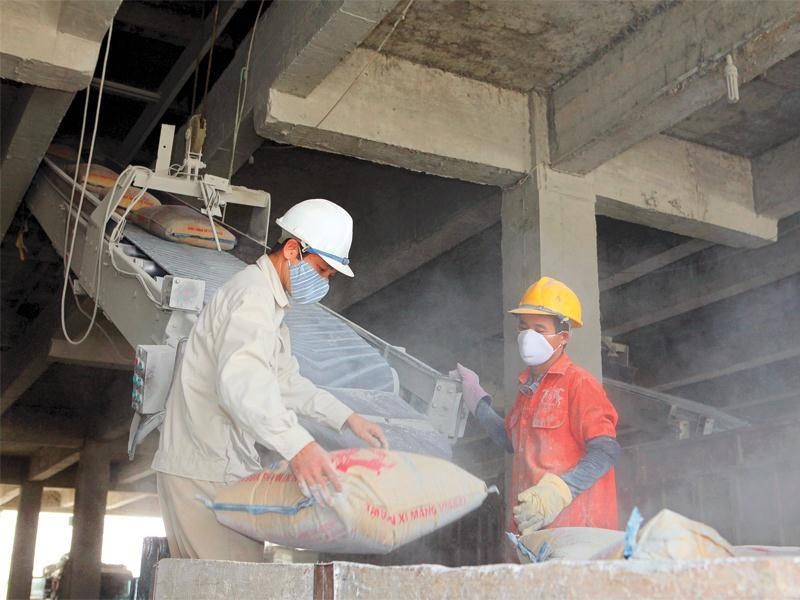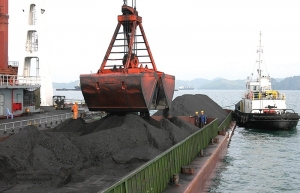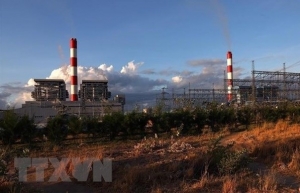Spiking coal price creates mixed sentiment
Globally, the price of coke (used in steel production) in Australia, after a decline for nearly two months and falling to a one-year bottom of $190 per tonne in the first week of August, reached $270 per tonne on September 6, a more than 40 per cent jump, nearly approaching its historic peak of $275 per tonne on February 28.
According to CoalMint, a coal price reporting agency, the price is forecast to touch $300-330 per tonne. For heat coal (used in power and fertiliser production), its price on September 6 set a new record of $457 per tonne.
According to US Energy Information Administration, a gas shortage in Europe has bolstered demand for coal-fired thermo-power and pushed up coal prices.
In Vietnam, according to SSI Research, the price of mixed coal from the Vietnam National Coal and Mineral Industries Group (Vinacomin) rose 30-35 per cent in the first half and will rise further amid soaring coal prices in the global market.
Concerns
As coal is the key input material of many major production sectors, its skyrocketing price has badly affected many firms' operations, particularly coal-fired power units.
Coal-fired thermal power currently accounts for 30 per cent of Vietnam’s total power production capacity.
According to the General Department of Customs, in the year to mid-July, despite a drop of 2.9 million tonnes of imported coal compared to one year ago, the coal import value was estimated at $4.7 billion, averaging $252 per tonne, nearly triple compared to one year ago.
| Coal-fired thermal power currently accounts for 30 per cent of Vietnam’s total power production capacity. |
The steel sector is also affected due by the soaring coal price.
According to WorldSteel, a major industry association, an average of 780kg of coal is required to produce one tonne of steel.
The Ministry of Industry and Trade forecasts that Vietnam will need to import about 6.5 million tonnes of coke to serve steel production in 2022.
More costly coal has badly affected leading steel makers like Hoa Phat Group and Thai Nguyen Iron and Steel JSC, which need to import coal to feed production.
 |
| Cement is one of the sectors bearing the brunt of soaring coal prices. |
The escalating coal price has also dampened cement production as coal often makes up 40-45 per cent of cement’s input material cost, leaving profits volatile.
The Building Materials Department under the Ministry of Construction reported that around 8.86 million tonnes of cement were sold in the domestic market and exported in August, up 3 million tonnes compared to July, but down 7 per cent on-year.
The stockpiled volume is around 5.9 million tonnes at present, equal to 25-30 days of production, mainly clinker.
Amid dwindling consumption, high inventory and soaring coal prices, cement makers have lowered production to avoid bigger losses.
Gas-fired power and fertiliser sectors cash in
SSI Research said that soaring coal prices had shortened the average selling price between gas-fired and coal-fired power plants, helping to boost the competitiveness of gas-fired power plants.
 | Power shortage worries increase hunger for coal Vietnam is maximising its coal mining output amid widespread power outages in the north. |
 | Coal shortages require Vietnam to diversify supply sources Vietnam is now in need of diversifying energy supply sources as it is facing a shortage of coal supply for electricity, cement, and fertiliser production due to impacts of the COVID-19 pandemic and the Russia - Ukraine conflict. |
As hydrology conditions are forecast to be less favourable in the late months of 2022 and early 2023, gas-fired power plants are expected to prevail.
As for the fertiliser sector, a higher coal price is beneficial to gas-fired urea fertiliser makers compared to coal-fired fertiliser makers, as coal can make up to 70 per cent of urea fertiliser production costs, bringing advantages to gas-fired fertiliser makers such as PetroVietnam Fertiliser and Chemicals Corporation and PetroVietnam Ca Mau Fertiliser JSC.
What the stars mean:
★ Poor ★ ★ Promising ★★★ Good ★★★★ Very good ★★★★★ Exceptional
Related Contents
Latest News
More News
- PM orders investment model for North–South high-speed rail (December 22, 2025 | 17:43)
- First members of Danang International Finance Centre revealed (December 22, 2025 | 17:39)
- Securing capital and efficiency for Vietnam’s 2026-2030 growth ambitions (December 17, 2025 | 10:00)
- Driving double-digit growth through green and circular transformation in Vietnam (December 17, 2025 | 09:00)
- Vietnam bucking trend in the global M&A landscape (December 16, 2025 | 14:20)
- Vietnam’s green transition demands collective financial action (December 15, 2025 | 12:00)
- VIR workshop highlights capital and policy for sustainable development (December 15, 2025 | 11:00)
- National Assembly approves pilot mechanisms to accelerate major projects in Hanoi (December 12, 2025 | 11:29)
- Vietnam eases policy approval requirements, simplifies foreign and outbound investments (December 11, 2025 | 17:53)
- Unpacking new momentum in Vietnam’s M&A market (December 10, 2025 | 09:59)

 Tag:
Tag:



























 Mobile Version
Mobile Version